 |
|
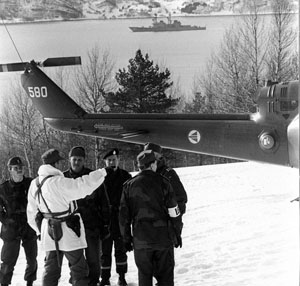 |
 |
|
 |

29a
| Ved forrige århundreskiftet
etter uniformene å dømme. Barn fikk prøve seg på hesteryggen, datidens «motorkjøretøyer». In the beginning of the 1900-years according to uniforms. Children got to try the horseback, the officer’s ‘vehicle’ of its time. |

25
| 4 skyts bergartilleri
kaliber 6,5 cm i en parade for folket, stor forsamling
med flagg. Bergartilleribataljonene hadde Kristiansand, Bergen og Setermoen som standkvarter, og et batteri ble også satt opp ved AR 3 i Trondheim. Bildet er rimeligvis tatt i Kr.sand eller Bergen. Tiden er fra før 1920, da nye 7,5 cm norskproduserte bergskyts begynte å bli tilført oppsetningene. Four guns mountain artillery howitzers cal. 6,5 cm on parade, in front of a great assembly of spectators with national colors. The Mountain Artillery Battalions 1, 2 and 3 were stationed at Kristiansand, Bergen and Setermoen (80 km North of Narvik). Also Field Artillery Regiment 3 in Trondheim had a MA battery in the set-up. The photo is from either Kristiansand or Bergen. The time is before 1920, as by that time new Norwegian made 7,5 cm mountain howitzers came to replace this 6,5 cm. |

28a

35a

36a

37

50

48
| Instruksjon i feltmåling i
artilleriet. (Landmåling) Posisjonsbestemmelse med fremskjæringer fra 2 kjente utgangspunkter forklares. Artillery survey instruction. Position determination by use of triangle measurements. |

51
| Britiskbygde
Austin lastevogner, kalt «Karveslott» på RV 50 sør
for Hjerkinn. Jernbanetraseen i bakgrunnen. Vognene kan tilhøre en trentropp i artilleriet, eller Stabsbatteriet. Tid mellom 1947 og -53. British made Austin lorries on Highway 50 south of Hjerkinn Firing Range. The railroad Oslo-Trondheim in the background, time 1947-53. The vehicles may be from the logistics platoon of a gun battery, or from the battalion’s staff battery. |

32
| Kanontropp i
artilleriet, med «karveslott» og 4 skyts 25-pundere,
ammunisjonsvogna til slutt. Også på RV 50 sør for
Hjerkinn Gun platoon in the Field Artillery, equipped with Austin 4x4 tractors towing a British made field howitzer, 25 pounds. Highway 50 south of Hjerkinn Firing Range. 1947-53. |

31
| Stillingsgang i
Hjerkinn skytefelt. Troppens KO-vogn, og skjoldet på en
25-punder. Snøhetta i bakgrunnen. Entering firing positions at Hjerkinn Firing Range. The command car of the platoon and the shield of a 25 pound howitzer are visible. The majestetic mountain Snøhetta in the background. |

33a
25-punder. Artilleristen i midten bakerst bærer svensk eller ex
tysk pelsjakke.
A 25 pound
howitzer. The gunner in the middle of thepicture is wearing an
ex-Swedish or German made fur coat.

38

39
| Ordremøte i artilleriet
under en bataljonsøvelse i et skytefelt. Ordre
mottakerne er menige, som tyder på en måletroppsjef gir
ordre om feltmålingen, dvs innmåling av
batteristillingene ut fra trigonometriske punkter.
US-karabiner og feltuniform M 51, dvs en tid etter at
våpenhjelpen begynte å komme fra USA først på
1950-tallet. Operation orders are given during a live firing exercise at Hjerkinn Firing Range. The receivers are conscripts, indicating personnel of the artillery battalion’s survey platoon, and the platoon commander giving orders. The start-up points are trigonometric points with clearly visible signals, given by the National Geographical Autorithy, where from battery positions and control points in the ‘battle area’ (impact area) are determined by triangular measurements. The soldiers are wearing US-carbines and Norwegian tailored field uniforms M51, indicating some US weapons support has arrived by beginning of the 1950s. |
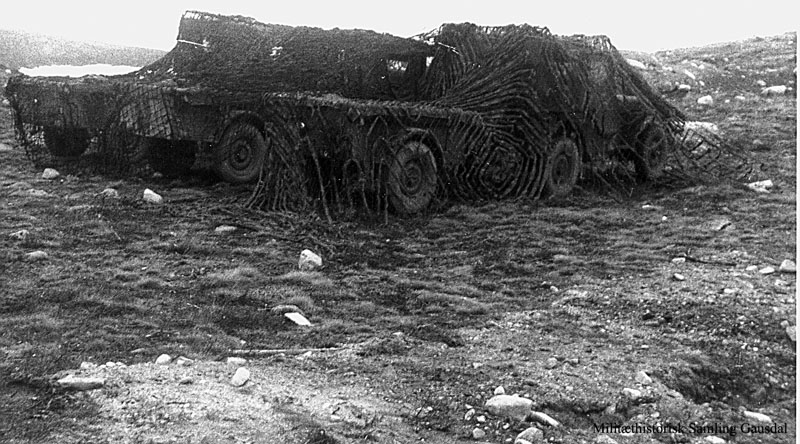
43a
3 OP-lag eller 3 felt måle lag i artilleriet. De hadde begge
Willys Jeep med 1/4-tonns henger.
Vehicles of three
fire-direction teams or three survey teams of the artillery. They
both were issued the Willys Jeep 4x4 with ¼-tons trailer.

44
| Ved Rolstad seter i Hjerkinn
skytefelt, der Grisungdalen var nedslagsområde. Kaffekok på gang for ildlederne i OP-hytta. By Rolstadseter, Hjerkinn Firing Range, where impact area were the Grisungdalen valley. Coffee being prepared for the fire-control teams inside the cabin. |

46
Feltmåler ved et trigonometrisk punkt. Regnearbeid etter vinkel
målingen.
Artillery survey
soldier by a trigonometric point. Calculations following
measurement of angels.

45
| Batterisjefen til høyre,
med amerikansk kikkert 7x50 som var hans KOP-utrustning.
3 OP-offiserer studerer kart, radiotelefonisten med PRC-9
(?) til høyre. Det betyr at da er radioen SCR 619 blitt
erstattet i oppsetningene, og tyder på tid mot slutten
av 1950- eller først på 1960-tallet.
Skarpskytingsøvelse. To the right in the photo, the commander of a field artillery battery wearing US-made binoculars, 7x50 enlargements, his personal equipment. Three fire control officers (forward observers) studying maps, a radio operator and his PRC-9(?). This is indicating the former SCR- 619 has been replaced in the set-ups. Time by the late 1950s or early 1960s. Live firing exercise. |

40a
| Enkelte
artilleriavdelinger var satt opp med en salig blanding av
svensk, tysk, britisk og etter hvert også amerikansk
materiell og uniformer helt til ut på 1960-tallet.
Offiserer bar den gang gjerne uniforms CAPs under
øvelser(!), kikkerten er en amerikansk 7x50. De lange
frakkene i ull var av svensk fabrikat, skytset er en
britisk 25-punder, og retteflaten (vinkel
måleinstrumentet i artilleribatteriene) til høyre er
den tyske. Denne ble brukt i artilleriet helt til
forsvarsraseringen på 1990-tallet. Ull-lua under
hjelmene var svensk, som også stålhjelmene er. Equipment of some artillery units were in the 1950s and 1960s a strange mix of origins. To be found were ex Swedish, German, British, and little by little US and Norwegian made uniforms and hardware. During field training exercises, officers often used Service uniform caps as headgear(!). The binoculars are the US 7x50. The long woolen coats were is of Swedish make, the gun is a British made 25 pounds, the survey-instrument of the artillery battery is German. This excelent instruments were used to the end of the Norwegian military organization based on conscription and refreshment exercises, in mid 1990s. The woolen headcover to be worn under the steel helmet is of Swedish make, as the helmet. |

41
| Tropps KO i
artilleriet, da vi brukte den håpløse engelske
batterioppsetningsplanen med 2 tropper som hadde 4 skyts.
(Slutt i august 1969, da vi endelig fikk batterier med 6
skyts) Vi ser her troppssjefen iført svensk eller tysk
pelsjakke med ropert for å gi skytsene ildordrer,
assistenten med peileskive til venstre og
radiotelefonisten med en SCR 619 til høyre. Teltet er et
britisk Walsall. Artillery platoon fire control center, during time using the hopeless British organization after WW2, two such platoons equipped with four guns in the firing battery. (The fire correction procedure was to slow. Ending by the 1. of August 1969, when getting six guns in the battery organiztion) The platoon commander wearing Swedish or German fur coat, holding a tube of thin metal plate to shout fire direction orders to the gunners. To the left private helper with map and yardstick doing calculation of firing orders to guns, to the right communications operator with the SCR-619 radio. The tent is the British Wall-Small. |

42a
Blandingen av materiell og uniformer er tydelig.
Felttjenesteøvelse.
The mix of
equipment and uniforms made in different countries is visible.
Field training exercise.

34a
| Vinterkjøretøyene
for artilleriets OP-lag var fra slutten av 1950-tallet
snøbeltevogner type Weasel M 29, til den ble avløst av
BV 202 i 1960-aarene. Weaselen hadde Studebaker motor, og
var et lite driftssikkert kjøretøy. Mannen til venstre
bærer en tysk 8x30 kikkert, som var KOP-materiell for
OP-offiserer og -assistenter. Batterisjefen i mørk lang
jakke gir ordre til OP-offiserene under en
skarpskytingsøvelse. The late 1950s and 1960s, vehicles for winter warfare were for the fire control teams in the field artillery units the US-made Weasel M29. It had a Studebaker gasoline engine, an unreliable means of transport due to frequent track- and engine problems. Replaced by the Swedish Hägglund Band-Wagon 202 early 1970s. To the left a soldier carrying German binoculars 8x30, which were issued to fire control teams. Battery commander wearing dark long jacket giving operation orders to his fire control officers (forward observers), during a live firing exercise. |

5a
| Smestadmoen nord for
Lillehammer var standkvarter for AR 2 fra 1960 da
regimentstaben flyttet ut fra Frognerleiren i Oslo.
Bildet er fra 1960-70. Til 1940 var dette en
utstillingsplass, dvs en «martnasplass». Mange på
Lillehammer kalte hele livet leirområdet og omgivelsene
for 'Utstillingen'. Tyskerne bygde ut leiren for
artilleriavdelinger, og fikk den gang navnet 'Lager
Barbara'. Et vakkert maleri av skytsgudinnen til
artilleriet ble avdekket på en vegg i en
forlegningsbrakke i leiren på 1970-tallet. Hvor det er
blitt av er ukjent. Vi ser RV 50 går inntil leirgjerdet nedenfor leiren, og Gamlevegen parallelt ovenfor, med tverrforbindelsen i øvre kant av leiren og til høyre i bildet. Det hvite huset like utenfor leiren litt ovenfor leirvakta tilhørte familien Ruud, og som hadde tverrforbindelsen mellom RV 50 og Gamlevegen mellom huset og leirgjerdet. (Olaf Ruud som fikk bygd huset, var medlem i NS og stod på god fot med leirledelsen. Reidar Buom bodde også der, han var sjåfør for Gestapo på Lillehammer. Leirvakta er bygningen nederst til høyre i leiren, med kjøretøy- og skytsverksteder litt til venstre. Det ex tyske huset hadde en hvitmalt kontordel i midten. Videre til venstre garasjer og telthus. De 5 brakkene øverst til høyre i leiren var hus for depot med skredder, radioverksted og flere andre aktiviteter. Den tyske betongbunkeren med kodelås skimtes mellom trærne til venstre for depotbrakken. Regimentstaben brukte den hvitmalte kontorbrakka øverst til venstre i leiren, der sjefens skrivebord kom fra tyske general Bøhmes kontor ved OKW i Norge. De 4 brakkene midt i leiren var til forlegning. Regimentsjefens bolig ble bygd på 1960-tallet, og er det lyse huset med mørkere tak rett opp for leirvakta. Smestadmoen camp just North of Lillehammer, was center of the large Artillery Regiment 2 from July 1959 to its scrapping from the organization in the 1990s. From 1945 to then, the Frognerleiren in Oslo were its headquarters. Photo is from around 1970. Until 1940 this area had been a marketplace, where an annual horseshow took place. (As growing up tree km away, my grandparents in the 1950s still named the camp as ‘the marketplace) During WW2, the Germans set up buildings for artillery units, and named the camp as ‘Lager Barbara’. A beautiful painting of our Artillery-Saint was revealed in the 1970s, on the outer wall of a housing hut. Its destiny is unclear. At bottom of the photo, Highway 50 close to the camp’s fence, The Old Highway (Oslo-Trondheim) atop, with the connecting dirt road to the right. The white-painted building to the right of the camp, a short distance above the Guards building at the entrance, on the connecting road along the camp fence, was belonging to the Ruud family. Olaf Ruud, a member of the Norwegian nazi party Nasjonal Samling (NS), had it built. The party fellow Reidar Buom also lived there with family. He served as driver for the Gestapo in Lillehammer until it ended…. Starting at the guards building at the entrance, to the left are workshops for vehicles and guns. The white painted building was housing offices, the workshop to the left and right. Further to the left, buildings storing vehicles, equipment and weapons for a field artillery battalion, an antiaircraft gun battery and different other units for mobilization. (AR2 made ready equipment to several such battalions and batteries) In upper right five originally accommodation buildings, were workshops for communication equipement, taylor and so on to be found. The concrete bunker with coded locking is to be seen between trees to the left of the workshops. Upper left, regimental HQ in white painted building, where the Commander’s office working table, had its origin as the same to the office of General der Gebirgstruppen Franz Bøhme, the last Oberbefehlshaber der Wehrmacht in Norwegen during 2WW. Four buildings in the middle of camp were for accommodation. Family house for the Regimental Commander was put up in the 1960s, light painted with darker roofing to be seen just over the guards building by the entrance. The information are well known to me, serving a few months as Regimental Mobilization Officer 1985, and growing up near by. |

15
2 OP-lag med weasel, sannsynligvis Hjerkinn.
Two fire control
teams and Weasels, probably at Hjerkinn Firing Range.

3
Mekkp. i infanteriet, eller stormdragoner i kavaleriet med en M
113 PPK.
Norwegian
mechanized infantry company, or assault troopers belonging to a
cavalry squadron, vehicle is US made M113. Time: 1970s.

STRVESK
STRVESK/TLF ca. 1976. Fra Bardufoss flyplass.

003a.jpg
STRVESK/TLF 1976. Bardufoss .
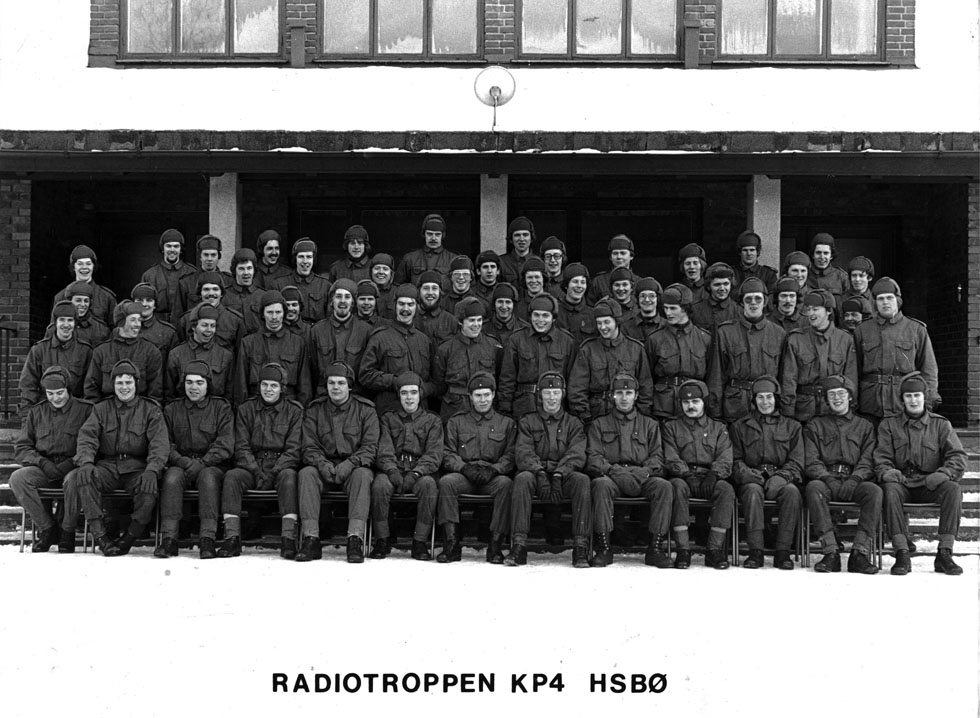
radiotroppen1976
Radiotelegrafist kl. B klassen 1976, Jørstamoen.
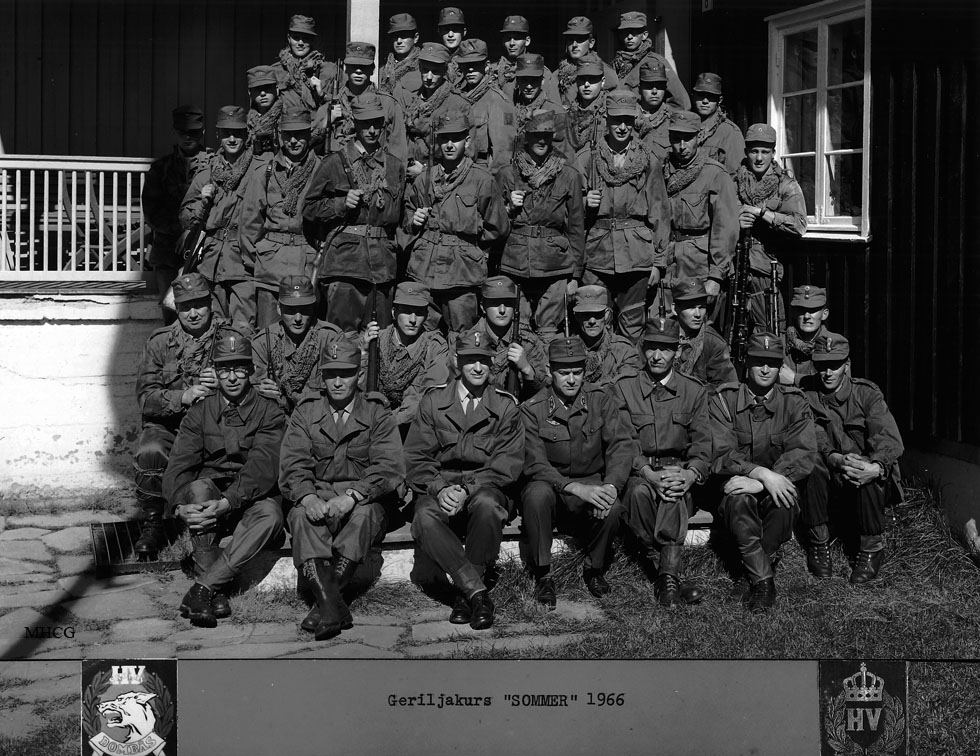
gerilja1a
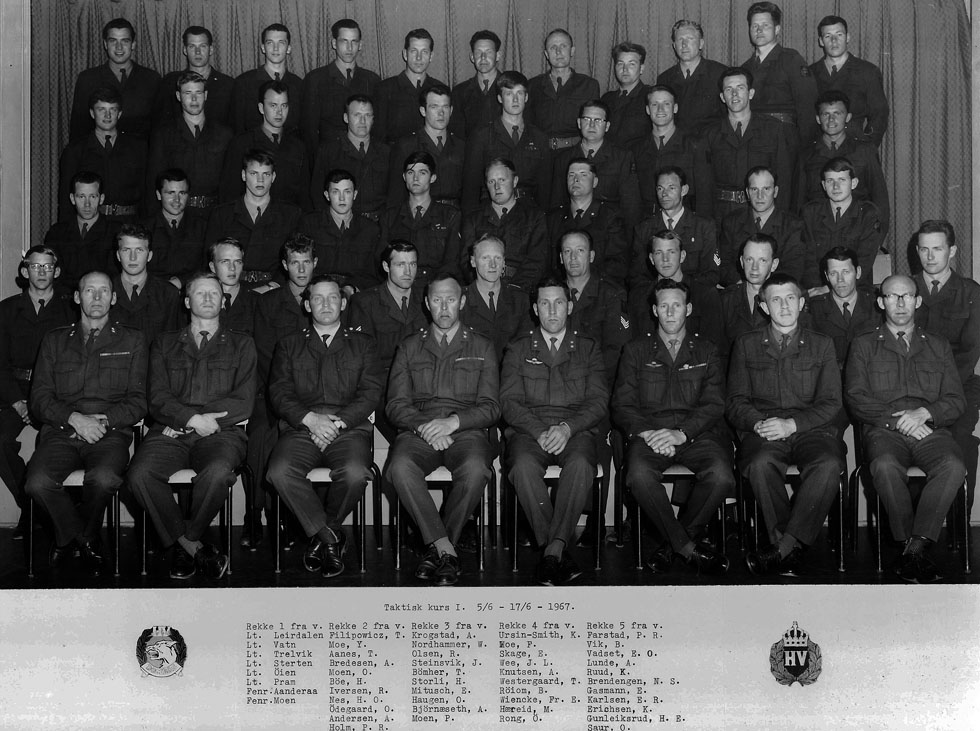
hv1a.jpg
| If you have some information
or question about my site, please send me a mail. I am interesting in all information or comment you may have.
|